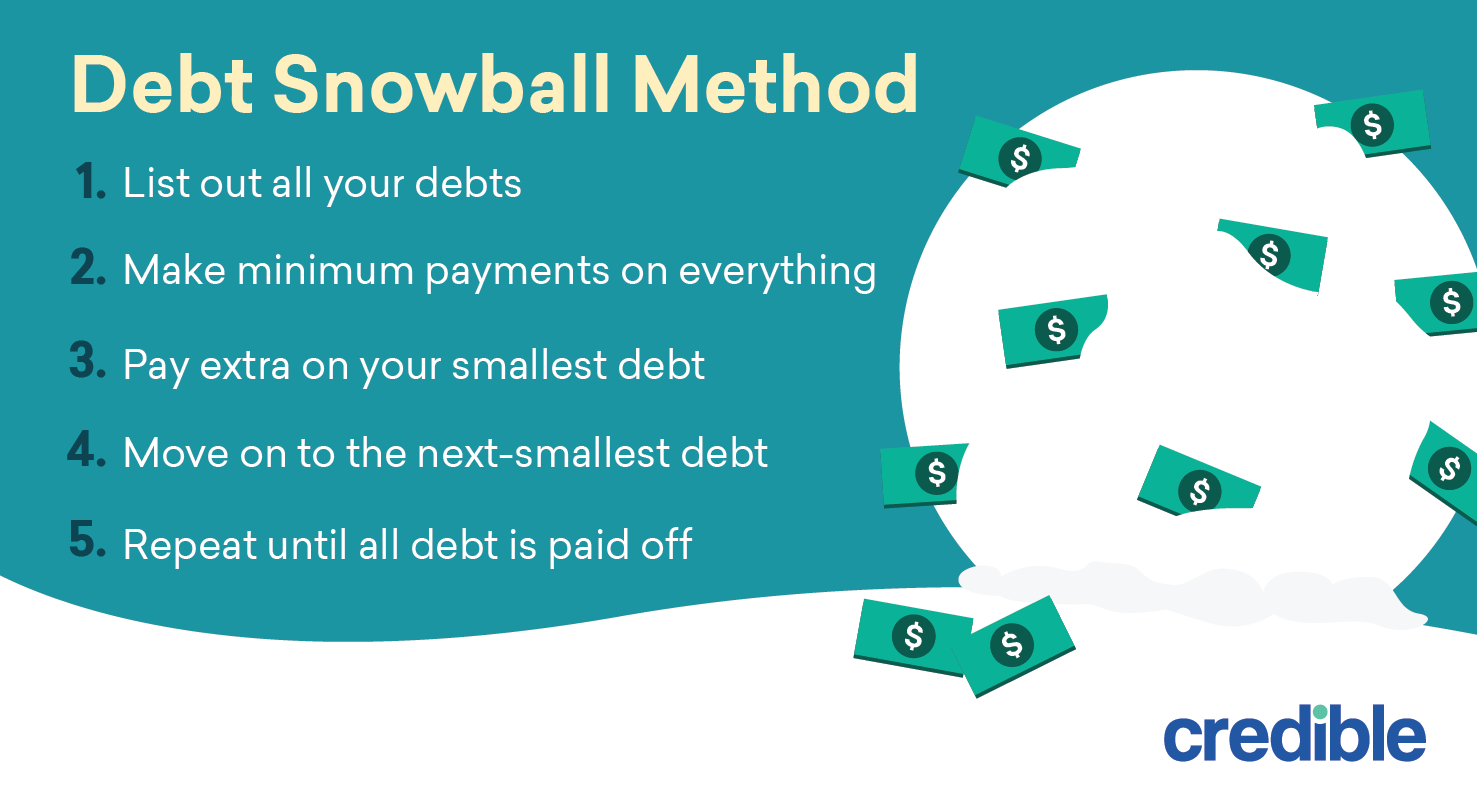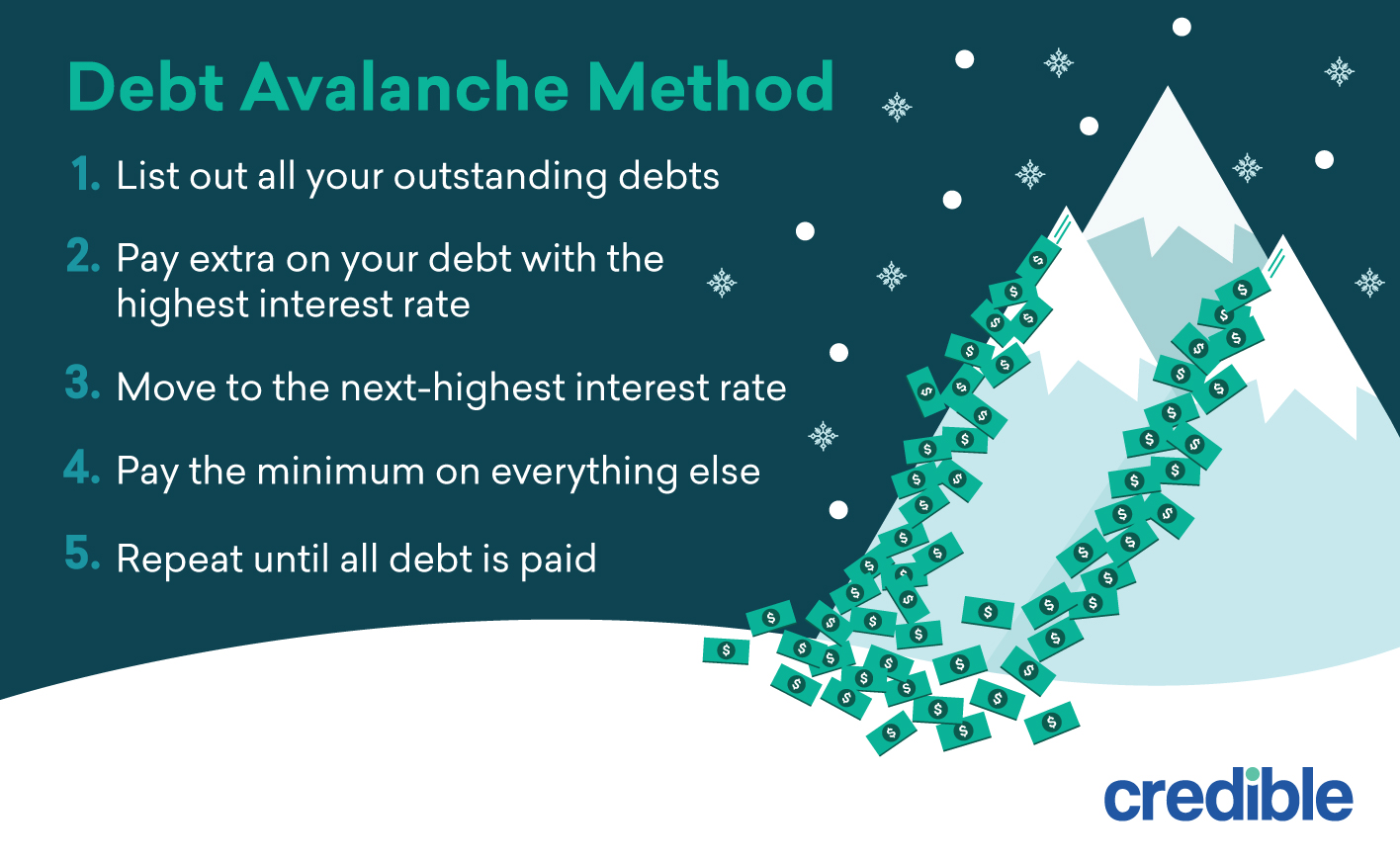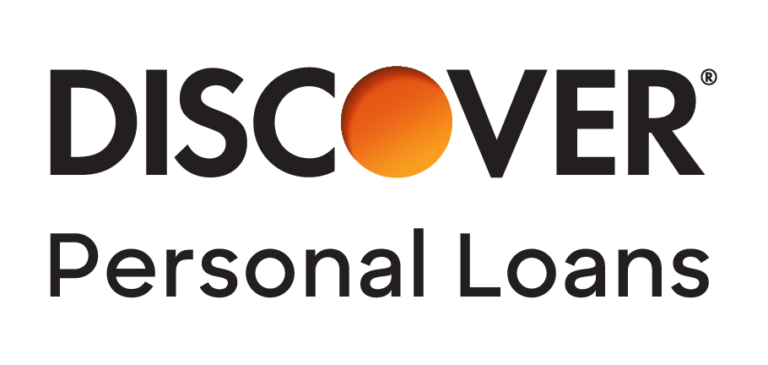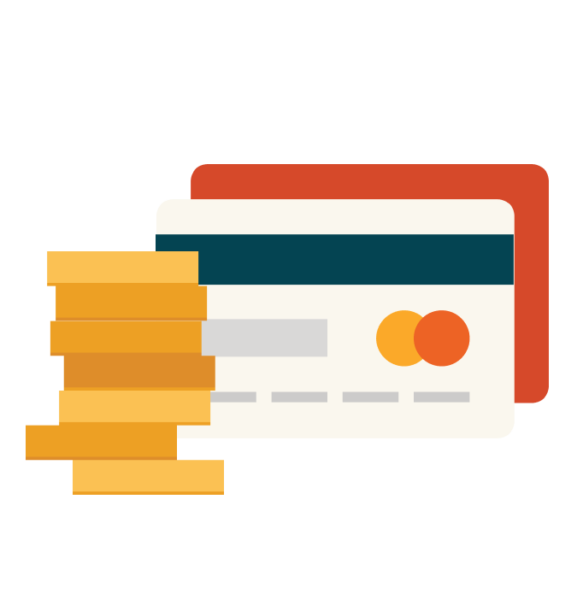Our goal is to give you the tools and confidence you need to improve your finances. Although we receive compensation from our partner lenders, whom we will always identify, all opinions are our own. Credible Operations, Inc. NMLS # 1681276, is referred to here as "Credible."
Credit card debt can be a major burden. While total credit card balances fell by $49 billion in the first quarter of 2021, U.S. households are still struggling with a collective $77 billion in credit card debt, according to the Federal Reserve.
Whether or not you have too much credit card debt is relative to your individual circumstances. However, if you’re struggling to pay off your credit card balance each month or you’re maxing out your cards, you might have too much credit card debt to reasonably manage.
If you’re wondering how much credit card debt is too much, here’s what you should know:
- How much credit card debt is too much?
- How to handle credit card debt
- More answers to credit card debt questions
How much credit card debt is too much?
Here are a few things that can point to having too much credit card debt:
Debt-to-income ratio
Your debt-to-income (DTI) ratio is the amount you owe in monthly debt payments compared to your income. Keep in mind that this ratio includes not only credit cards but all of your debts, such as rent and student loans.
To calculate your DTI ratio, follow these steps:
- Add up your minimum monthly bills, such as loans, credit cards, and other required financial obligations.
- Divide this number by your total monthly income to get your DTI ratio.
Learn More: Debt Consolidation Loans
Credit utilization ratio
Your credit utilization ratio compares the amount of revolving credit you have to your credit limits. To calculate this ratio:
- Add up your revolving credit balances, such as from credit cards and lines of credit.
- Divide this number by your total credit limits.
For example, say you have two credit cards that both have $5,000 limits — meaning you have $10,000 in total available credit — and you max out one card.
To get your credit utilization ratio, you’d divide the $5,000 balance by the $10,000 total limit, which equates to 50%.
Having a higher credit utilization ratio can bring your credit score down, which could make it harder to qualify for credit in the future.
Check Out: Personal Loan vs. Credit Card
Unaffordable minimum payments
Your minimum payment is what you’re required to pay each month to keep your account in good standing. For credit cards, these payments are based on your annual percentage rate (APR) and your total balance per card — which means they can fluctuate each month depending on how much you spend.
Or if you have a balance below a certain threshold, you might be charged a fixed payment instead, such as $25.
For example, they might be willing to extend your due date or accept a lower payment for the time being.
Learn More: Pay Off Credit Card Debt ASAP With a Personal Loan
How to handle credit card debt
Here are a few strategies that could help you tackle your credit card debt:
Debt snowball method
With the debt snowball method, you’ll focus on paying off your lowest balance first. Here’s how it works:
- List out each debt you have.
- Put any extra cash you have toward the smallest debt.
- Continue making minimum payments on your other debts.
- Once this debt is paid off, move on to the next-smallest debt.
- Continue until all of your debts are paid off.

Check Out: Emergency Loans: How to Get a Personal Loan Fast
Debt avalanche method
Another option is the debt avalanche method, which focuses on paying off the debt with the highest interest rate first. To follow this method:
- List out each debt you have.
- Put any extra cash you have toward the debt with the highest interest rate.
- Continue making minimum payments on your other debts.
- Once this debt is paid off, move on to the debt with the next-highest interest rate.
- Continue until all of your debts are paid off.
However, keep in mind that it can take a longer time to see the fruits of your labor with the debt avalanche. If you need to see more immediate results to stay motivated, the debt snowball method might be a better fit.

Learn More: Where to Get a Personal Loan
Balance transfer credit card
A balance transfer lets you move your balance from one card to another. Some balance transfer cards come with a 0% APR introductory offer — meaning you could avoid paying interest if you pay off your card before this period ends.
However, if you can’t repay your balance in time, you could be stuck with hefty interest charges. Because of this, a balance transfer card is likely a better option if you have a smaller balance to pay off.
Check Out: How Debt Consolidation Loans Can Help Your Credit Score
Personal loan
You can use a personal loan to consolidate your credit cards. This will leave you with just one loan and a fixed monthly payment to manage, which could be especially helpful if you have a large amount of credit card debt to pay off.
Or you could opt for a longer repayment term to reduce your monthly payment and lessen the strain on your budget — though keep in mind that choosing a longer term means you’ll pay more in interest over time.
If you decide to consolidate your credit cards with a personal loan, be sure to consider as many lenders as possible to find the right loan for you. Credible makes this easy — you can compare your prequalified rates from our partner lenders in the table below in two minutes.
| Lender | Fixed rates | Loan amounts | Min. credit score | Loan terms (years) |
|---|---|---|---|---|
 | 9.95% - 35.99% APR | $2,000 to $35,000** | 550 | 2, 3, 4, 5* |
|
||||
 | 8.24% - 18.99% APR | $10,000 to $50,000 | 730 | 3, 4, 5, 6 |
|
||||
 | 6.99% - 35.99% APR | $2,000 to $50,000 | 600 | 2, 3, 4, 5 |
|
||||
 | 7.99% - 24.99% APR | $2,500 to $40,000 | 660 | 3, 4, 5, 6, 7 |
|
||||
 | 7.95% - 29.99% APR | $3,000 to $40,000 | 640 | 2, 3, 4, 5 |
|
||||
 | 7.04% - 35.99% APR | $1,000 to $40,000 | 660 | 3, 5 |
|
||||
 | 7.99% - 35.99% APR | $2,000 to $36,500 | 660 | 2, 3, 4, 5, 6 |
|
||||
 | 6.49% - 25.29% APR with autopay | $5,000 to $100,000 | 700 | 2, 3, 4, 5, 6, 7 (up to 12 years for home improvement loans) |
|
||||
 | 18.0% - 35.99% APR | $1,500 to $20,000 | 540 | 2, 3, 4, 5 |
|
||||
 | 8.49% - 17.99% APR | $600 to $50,000 (depending on loan term) | 760 | 1, 2, 3, 4, 5 |
|
||||
| 8.74% - 35.49% APR10 | $5,000 to $100,000 | Does not disclose | 2, 3, 4, 5, 6, 7 | |
|
||||
 | 11.69% - 35.99% APR7 | $1,000 to $50,000 | 560 | 3, 5, or 7 years 8 |
|
||||
 | 7.74% - 35.99% APR | $1,000 to $50,000 | 600 | 2, 3, 4, 5, 6, 7 |
|
||||
 | 6.6% - 35.99% APR4 | $1,000 to $50,0005 | 620 | 3 or 5 years4 |
|
||||
Read on: Debt Consolidation Loan vs. Credit Card Refinancing: How To Choose
More answers to credit card debt questions
Here are the answers to several commonly asked questions regarding credit card debt:
How much credit card debt does the average person have?
In the third quarter of 2020, U.S. adults had an average of 3.84 credit cards per person with an average balance of $5,315 per person, according to Experian. This is 4% less compared to the average credit card debt in 2019.
Learn More: Bad Credit Personal Loans
Is it OK to carry credit card debt?
Carrying a credit card balance isn’t necessarily bad. However, it’s important to know the risks that come with it.
For example, carrying credit card debt means you’ll pay interest on whatever your balance is. Additionally, interest will compound on whatever you haven’t paid off after your due date, which means it could take even longer to pay off your card in full.
And the longer it takes, the more interest you’ll end up having to pay.
Check Out: How to Get a Personal Loan With a 600 Credit Score
Is it bad to pay your credit card twice a month?
No — if you can afford it, it’s usually a good idea to pay extra on your credit card each month so you can get out of debt faster while saving money on interest charges. As long as you make at least your minimum monthly payment, you can pay your credit card as often as you’d like.
Just make sure that your payments fit reasonably within your budget so you don’t stretch yourself too thin.
Learn More: Personal Loan Calculator: How Much Can I Borrow?
Is it better to save or pay off debt?
This depends on your current savings as well as what type of debt you have. In general, it’s a good idea to set aside at least three to six months’ worth of expenses. This way, you won’t have to take on more debt if you need to cover unexpected expenses.
Once you’re in a decent place with your savings, you can turn your focus to aggressively paying off credit card debt.
Check Out: COVID-19: How Personal Loan Lenders Are Helping Borrowers
How can I pay off $15,000 in credit card debt?
There are several ways to pay off $15,000 in credit card debt. However, the right plan for you will depend on your financial situation and how much you can reasonably afford to pay toward your credit card debt each month.
For example, you could opt for the debt avalanche method and pay extra toward your card with the highest interest rate first. Or you could consolidate your debt with a $15,000 personal loan and then simply focus on making monthly payments.
Learn More: 3 Steps to Get a Debt Consolidation Loan for Bad Credit
Why did my credit score go down when I paid off my credit card?
Generally, paying off a credit card will have a positive impact on your credit score. However, there are a few situations that could cause your score to go down, such as:
- You closed your card. If you closed your account after paying off the card, it could have affected the average age of your accounts or your credit utilization ratio. This could lead to a drop in your score.
- Your credit report hasn’t been updated. Credit card issuers usually wait until the end of your billing cycle to report new information — such as a payoff. In this case, you’ll simply need to wait for the credit bureaus to receive the information.
Check Out: Debt Consolidation vs. Bankruptcy: How to Choose
Will credit card companies forgive debt?
Credit card companies don’t normally forgive debt. However, there are a few other options that might help you more easily manage your debt, such as:
- Debt management plan: With this type of plan, a credit counseling agency — such as the National Foundation for Credit Counseling — will help set up a payment plan with your creditors. You’ll then make a lump sum payment to the agency each month, which will send the funds to the creditors. While you won’t have any of your debt discharged with a debt management plan, your creditors might be willing to waive fees or finance charges. As you’ll repay all of your debt with this option, you might also be able to rebuild your credit along the way.
- Debt settlement plan: Unlike debt management plans, debt settlement plans are typically offered by for-profit companies. These companies try to negotiate with your creditors to allow you to make a lump-sum payment that’s less than what you owe to settle your debt. This method can be risky as the company will often ask you to stop making credit card payments, which can harm your credit. Plus, your creditors might not agree to the settlement.
- Bankruptcy: By filing Chapter 7 or Chapter 13 bankruptcy, you could have some or all of your debt discharged. This option should be a last resort as it will severely damage your credit, but in some cases, it could be the right move to get back on your feet financially. Be sure to talk with a bankruptcy lawyer to see if it’s the best option for you.
If you decide to get a personal loan to consolidate credit card debt, remember to consider as many lenders as possible to find the right loan for your needs. This is easy with Credible: You can compare your prequalified rates from multiple lenders in two minutes — without affecting your credit.
Ready to find your personal loan?
Credible makes it easy to find the right loan for you.
Find My Rate
Checking rates won’t affect your credit
About Rates and Terms: Rates for personal loans provided by lenders on the Credible platform range between 5.20%-35.99% APR with terms from 12 to 144 months. Rates presented include lender discounts for enrolling in autopay and loyalty programs, where applicable. Actual rates may be different from the rates advertised and/or shown and will be based on the lender’s eligibility criteria, which include factors such as credit score, loan amount, loan term, credit usage and history, and vary based on loan purpose. The lowest rates available typically require excellent credit, and for some lenders, may be reserved for specific loan purposes and/or shorter loan terms. The origination fee charged by the lenders on our platform ranges from 0% to 12%. Each lender has their own qualification criteria with respect to their autopay and loyalty discounts (e.g., some lenders require the borrower to elect autopay prior to loan funding in order to qualify for the autopay discount). All rates are determined by the lender and must be agreed upon between the borrower and the borrower’s chosen lender. For a loan of $10,000 with a three year repayment period, an interest rate of 7.99%, a $350 origination fee and an APR of 11.51%, the borrower will receive $9,650 at the time of loan funding and will make 36 monthly payments of $313.32. Assuming all on-time payments, and full performance of all terms and conditions of the loan contract and any discount programs enrolled in included in the APR/interest rate throughout the life of the loan, the borrower will pay a total of $11,279.43. As of October 9, 2023, none of the personal loan lenders on our platform require a down payment nor do they charge any prepayment penalties.






